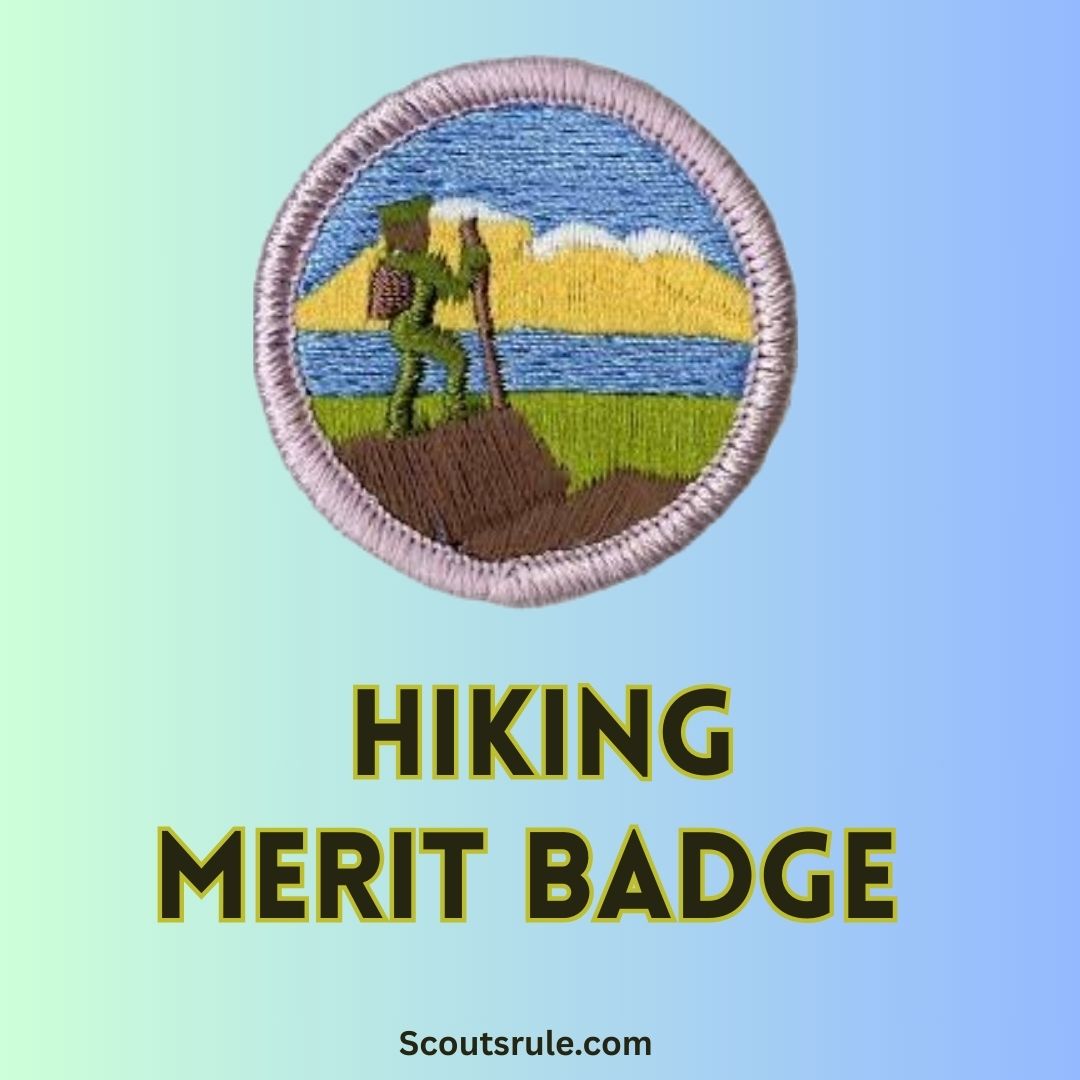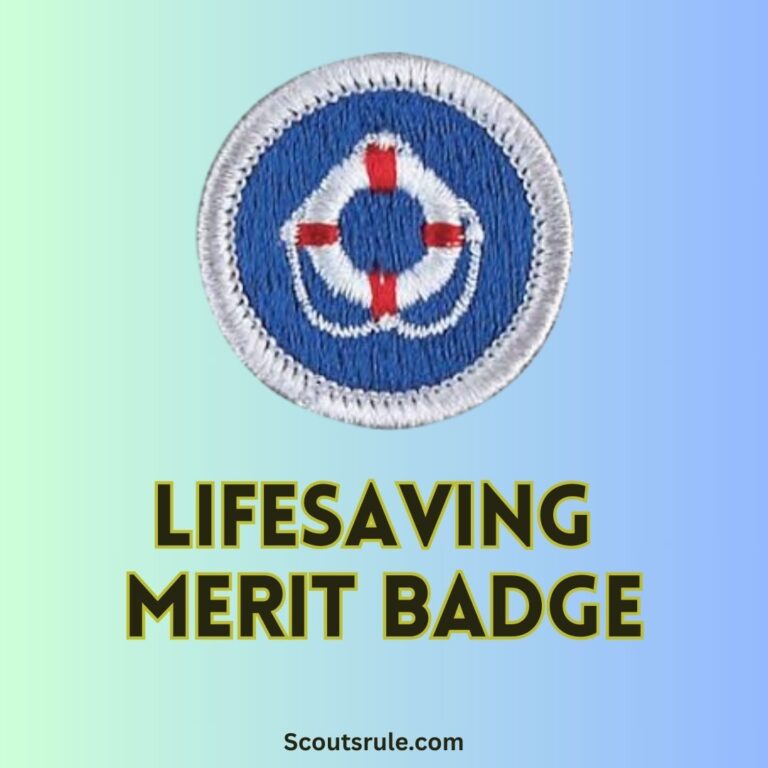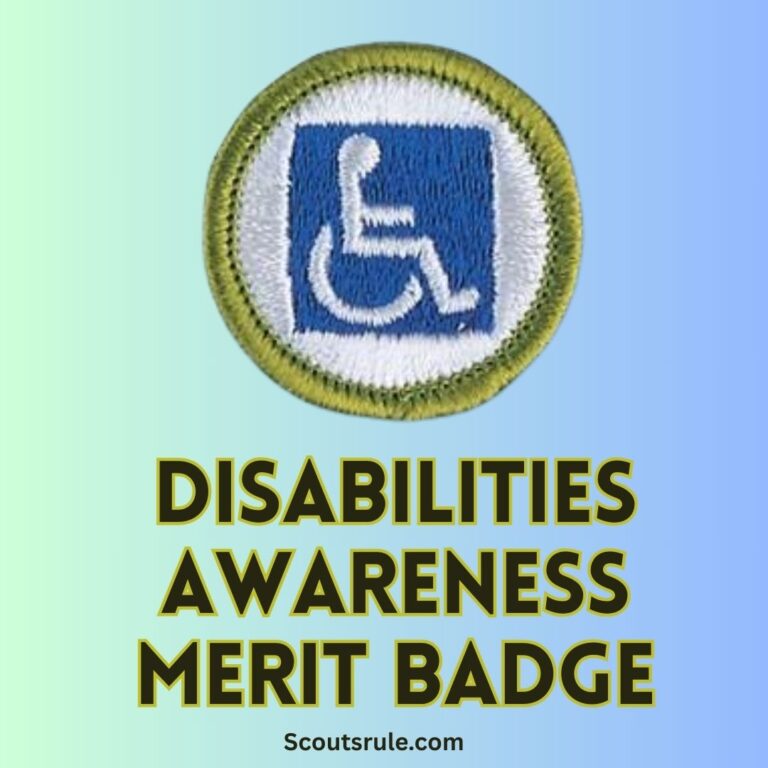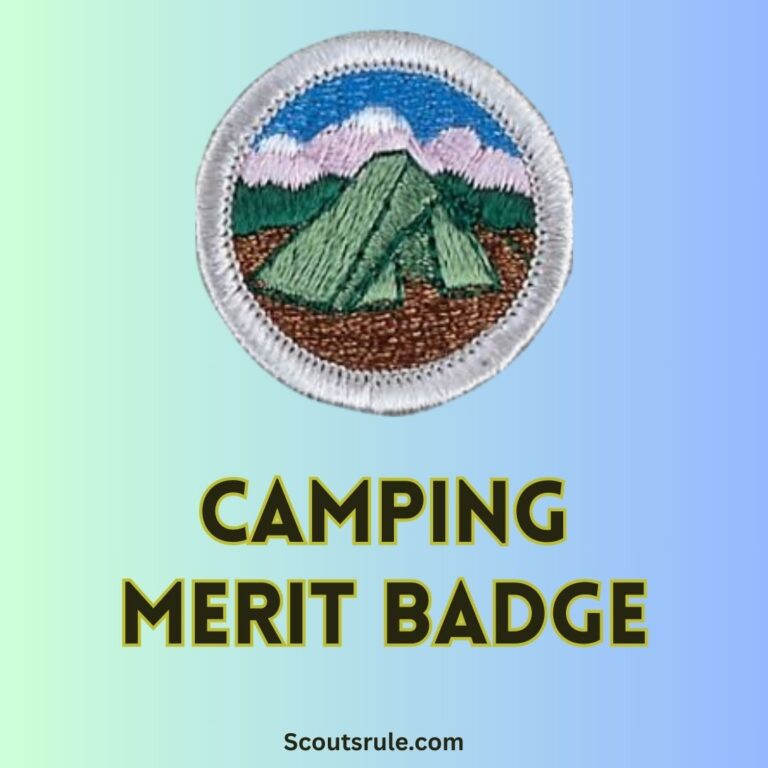
Hiking is at the very heart of Scouting, testing both your physical endurance and your ability to connect with nature in a respectful, safe, and thoughtful way. The Hiking Merit Badge is more than just a requirement—it’s an opportunity to learn valuable outdoor skills, experience breathtaking landscapes, and build strong character through challenge and adventure. This guide will walk you through the entire process: from understanding the hazards you may encounter and the fundamental first‑aid measures, to planning your hikes, executing them safely, and finally documenting your adventures.
Post Contents
- 1. Understanding the Hiking Merit Badge Requirements
- 2. Physical Conditioning and Understanding Hiking as an Aerobic Activity
- 3. Planning Your Hikes
- 4. During the Hike: Navigational Skills, Safety, and Observation
- 5. After the Hike: Documenting Your Experience
- 6. Additional Tips for Success
- 7. Frequently Asked Questions (FAQ)
- 8. Final Thoughts: Embrace the Journey
1. Understanding the Hiking Merit Badge Requirements
Before you lace up your boots, it’s essential to understand the key requirements of the Hiking Merit Badge. The badge challenges you to demonstrate mastery of several areas, including:
1.1. Recognizing Hazards and First‑Aid for Hiking
One of the first tasks is to explain to your counselor the most common hazards you might encounter on the trail. These may include:
- Environmental Hazards:
- Hypothermia and Frostbite: Risks in cold weather, especially if you’re caught unprepared during sudden weather changes.
- Heat Exhaustion and Heatstroke: Likely in hot climates or during strenuous hikes without adequate water.
- Dehydration: A serious concern on long hikes or under the hot sun.
- Injuries:
- Sprained Ankle, Blisters, and Insect Stings: Frequent issues that can be managed with proper footwear and by taking basic precautions.
- Tick Bites and Snakebites: Require prompt first‑aid and knowledge of how to reduce their risk.
To fulfill this requirement, you must be able to describe these hazards, detail preventive measures, and demonstrate that you know first‑aid procedures for these injuries or conditions. Practice by reviewing first‑aid techniques with your troop’s first‑aid instructor and ensure you’re confident explaining what to do when a situation arises.
1.2. Practicing Good Hiking Habits and Outdoor Ethics
A significant component of the Hiking Merit Badge is understanding and applying responsible outdoor ethics. You must be able to:
- Explain Good Hiking Practices:
- Choose proper footwear and maintain your feet to avoid blisters.
- Understand hiking safety guidelines for both daytime and nighttime outdoor activities.
- Practice courtesy to others, ensuring you respect the rights and spaces of fellow hikers.
- Learn and Apply “Leave No Trace” Guidelines:
- Recite key principles—such as disposing of waste properly, leaving what you find, and being considerate about where you walk—to minimize your impact on nature.
- Familiarize Yourself with the Outdoor Code:
- Discuss examples of how to follow the code in everyday outdoor experiences.
- Understand that these guidelines help preserve the environment and ensure that everyone can enjoy nature respectfully.
This section ensures that you respect the environment and embrace the ethical responsibilities that come with exploring the wilderness.
2. Physical Conditioning and Understanding Hiking as an Aerobic Activity
Hiking is not only a test of endurance—it is also an excellent aerobic activity that strengthens your heart, lungs, and muscles.
2.1. Developing an Aerobic Activity Plan
Before attempting long-distance hikes, it’s important to prepare physically. You are required to develop and implement a conditioning plan that prepares you for:
- 10‑Mile Hikes: Start by building endurance with shorter hikes and gradually increase your distance.
- 20‑Mile Hike: This longer hike is a culmination of your physical training. It’s crucial to have a clear plan for how you will increase your fitness level ahead of this challenge.
Consider the following when developing your conditioning plan:
- Regular Training Sessions: Incorporate daily exercises—such as jogging, brisk walking, or cycling—to improve cardiovascular health.
- Incremental Increases: Gradually extend the distance and difficulty of your hikes, ensuring you build strength and stamina without overexerting yourself.
- Rest and Recovery: Remember that proper rest is a vital part of training. Allow your body to recover between strenuous activities.
By treating hiking as a structured exercise program, you lay the groundwork for a safer and more enjoyable experience during your merit badge hikes.
3. Planning Your Hikes
A key part of the Hiking Merit Badge is demonstrating that you can plan and execute long hikes. This involves creating a detailed hike plan that covers the following components:
3.1. Written Hike Plans
For each required hike, you must prepare a written plan that includes:
- Map Routes:
- Outline your route, including landmarks and planned stops.
- Ensure that the route is appropriate for the distance and difficulty of your hike.
- Clothing and Equipment Lists:
- Detail the proper attire for the season and weather conditions.
- Include a checklist for essential hiking gear, such as a compass, first‑aid kit, water, snacks, and appropriate footwear.
- Trail Lunch and Snacks:
- Plan for lightweight, nutritious food that can be easily carried.
- Consider hydration needs and the availability of water sources along your chosen route.
3.2. Safety Briefings and Informing a Counselor
Before you set out on each hike, share your plan with your merit badge counselor or a designated adult. Not only does this ensure you have a backup in case of emergency, but it also demonstrates that you’ve thought through the logistics of your hike.
Once you’ve prepared your hike plan and conditioned your body, the next step is to head out on the trail. As you hike, pay special attention to the following:
- Reading Maps and Using a Compass:
- Become proficient in using a map and compass to maintain your course.
- Practice identifying key landmarks and confirming your location along the trail.
- Keeping Track of Your Route:
- Note any deviations from your planned route.
- Stay aware of your surroundings at all times.
4.2. Monitoring Your Environment and Health
- Weather Conditions:
- Always be mindful of the weather. If conditions change unexpectedly, be prepared to adjust your pace or even turn back if necessary.
- Checkpoints and Rest Stops:
- Follow your planned breaks but remain flexible to adjust the frequency and duration of rests based on how you feel.
- Use these stops to check in on your physical condition, hydrate, and have a quick snack.
- Observation and Reflection:
- Take mental or physical notes of anything interesting you observe. Whether it’s a change in the landscape or wildlife encounters, these observations will be valuable for your hike reports later.
4.3. Safety Measures On the Trail
- Avoiding Hazards:
- Stay on designated paths to minimize exposure to hazards like uneven terrain, steep slopes, or areas known for wildlife.
- Recognize signs of potential hazards (e.g., rocky areas where you might twist an ankle) and modify your behavior accordingly.
- Emergency Preparedness:
- Always carry a fully stocked first‑aid kit.
- Know the basics of what to do in the event of an injury or sudden illness—whether it’s applying bandages, cooling someone with heat exhaustion, or using your emergency signals.
5. After the Hike: Documenting Your Experience
Documentation is a critical element of the Hiking Merit Badge—it allows you to reflect on your experience, assess your performance, and learn for future hikes.
5.1. Hike Reports
After each required hike (four 10‑mile hikes and one 20‑mile hike), you must write a short report that includes:
- Date and Route Description:
- Document the exact route you took, including sketches or maps if available.
- Note any significant landmarks or deviations from your planned route.
- Weather and Environmental Conditions:
- Record the weather conditions during your hike.
- Note any environmental factors—like heavy rain, extremely high temperatures, or unexpected wildlife encounters—that affected your experience.
- Challenges and Overcoming Them:
- Discuss any obstacles you encountered and detail the actions you took to overcome these challenges. For instance, explain how you managed dehydration or navigated a tricky section of the trail.
- Personal Reflection:
- Consider what the hike taught you about your physical limits, your planning skills, and your ability to respond to nature.
- Reflect on any lessons learned—whether about safety, the value of preparation, or simply the joy of hiking.
Sharing these reports with your merit badge counselor not only fulfills a primary requirement but also contributes to your overall growth as an outdoor enthusiast.
6. Additional Tips for Success
To truly excel in the Hiking Merit Badge and make the most of your outdoor experience, consider the following tips:
- Start Training Early:
- Begin your conditioning program well before your first hike. Even moderate, consistent exercise will markedly improve your endurance and overall hiker’s performance.
- Document Everything:
- Keep a trail journal where you can jot down observations, thoughts, and notes for your hike reports. Over time, this journal becomes a personal record of your growth and adventures.
- Practice Navigation:
- Make time to visit a local park or trail and practice using a compass and reading a topographic map. This skill is critical not only for the merit badge but also for safe and independent hiking.
- Prepare for Emergencies:
- Familiarize yourself with your first‑aid kit’s contents and practice basic first‑aid techniques. Consider enrolling in a first‑aid class specifically for outdoor activities, if available.
- Respect the Environment:
- Embrace Leave No Trace principles and the Outdoor Code. Respect nature, be courteous to other hikers, and ensure that your actions do not harm the environment. This attitude not only fulfills your ethical responsibilities as a Scout but also preserves the trails for future generations.
- Use a Buddy System:
- When possible, hike with a friend or group. Not only is this safer, but it also enriches the experience as you share observations and learn from each other.
7. Frequently Asked Questions (FAQ)
Q1. What exactly must I demonstrate to earn the Hiking Merit Badge? A1. You must explain common hazards, demonstrate first‑aid knowledge, practice good hiking and outdoor ethics, develop and implement a conditioning plan, and complete four 10‑mile hikes plus one 20‑mile hike—each with a detailed plan and subsequent report.
Q2. How do I prepare physically for a 20‑mile hike? A2. You should develop a conditioning plan that gradually increases your endurance. Start with shorter hikes and include regular aerobic exercises. Allow for proper rest and recovery, and monitor your progress over time.
Q3. What should be included in my hike report? A3. Each report should include the date, a description or map of your route, weather conditions, any interesting observations, challenges encountered, and how you overcame them. Reflect on what you learned during the hike.
Q4. What safety measures should I never overlook on the trail? A4. Always carry a fully stocked first‑aid kit, map and compass, sufficient water, and snacks. Keep aware of natural hazards and be prepared to alter your route if conditions change. Knowing basic first‑aid procedures is also essential.
Q5. How do the Leave No Trace guidelines factor into my hike? A5. You must recite and discuss the principles of Leave No Trace, explaining their importance. This ensures that you understand and respect the ethics of minimal impact on the environment—an essential part of the Hiking Merit Badge.
8. Final Thoughts: Embrace the Journey
Earning the Hiking Merit Badge is not merely a tick on your advancement checklist—it’s an investment in a skill set and mindset that will benefit you for life. Every step you take on the trail teaches you about resilience, resourcefulness, and respect. By planning thoroughly, training diligently, and approaching each hike with a spirit of curiosity and caution, you not only prepare yourself to meet the badge’s challenges but also open your eyes to the wonders of nature.
As you compile your hike plans, observe the beauty of the outdoors, and reflect on each challenge you overcome, remember that the true reward lies in the journey. Each mile you complete strengthens your connection to the environment and deepens your understanding of what it means to be an engaged, responsible Scout.
So, pack your gear, review your plan one more time, and step confidently into the wilderness. Embrace each hill, each twist of the trail, and every moment of isolation or camaraderie as a valuable learning experience. Your adventure awaits, and with careful planning and an open heart, you will not only earn your Hiking Merit Badge but also gain the skills and memories that last a lifetime.
Happy hiking, and may every trail lead you to new discoveries!
By following this guide and meeting each requirement diligently—from hazard awareness and first‑aid knowledge to rigorous planning and honest self‑reflection—you’ll be well on your way to earning the Hiking Merit Badge. The skills and insights you gain through this process will serve you well on every journey, whether on a local trail or in life beyond the woods.

Hi, Robin here, A former lead Scout and here I share my inspiring stories about USA Scouts, leadership, adventure, how to guides and more.






